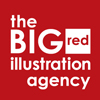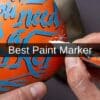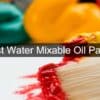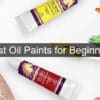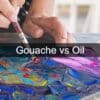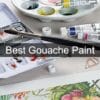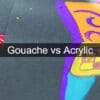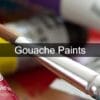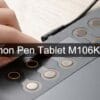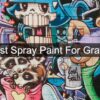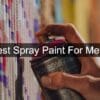How to Make Skin Color With Markers

When it comes to creating true-to-life skin tones in your artwork, there are several important factors to do it successfully. If you’ve been struggling to make skin colors look natural in your artwork by using markers, then this is the post for you.
Markers to Color Skin Tones
One of the biggest factors that will sway your success when coloring in a skin tone is the types of markers that you use. Below, you can find some of the most important factors to take into consideration when choosing permanent markers that are best for basic skin tones, dark skin tones, light tones, and fair skin tones.
Color Range
The range of colors that are available in a particular set is important for achieving a specific skin tone. This is because you want to ensure that the set you’re using comes with a good range of shades. Ohuhu skin tone markers are a popular choice for making a skin color appear more realistic. The color combinations available also help you to blend easily.
Achieving a true skin tone through your artwork requires you to blend multiple shades to create shadows. This is also what allows you to add more small details to your work that make it look realistic when drawing different skin types.
Although, if caricatures or cartoon-style drawings are more your style, you may not need to have so many shades in one set as the skin tone may not be true to life.
Ink Type
You can choose between water-based and alcohol-based ink. When it comes to water-based ink, you’ll be able to add lighter colors to your work. The watery nature of these markers makes them ideal for light shading and details.
Alcohol-based ink, on the other hand, provides you with more full colors and works well for dark tones. The ink is thicker and usually dries more quickly than water-based ink.
But try them both and see, the type of ink you use comes down to personal preference and your artistic style.
Nib Type
There are a few main kinds of nibs to be aware of when using markers. These include brush, fine, and broad tips.
If you’re looking for something more firm when coloring in skin tones, broad and fine tips are your best option. However, brush nibs are better when it comes to providing you with more flexibility on the page.
You may want to experiment with these different nibs to see how they all react when shading in color tones. Some markers have a double-ended feature where one side includes a fine nib and the other one includes a broad nib.
Organization
Organizing your permanent markers will help you to work more quickly and efficiently when adding skin tones to your work.
Many artists like to organize their sets based on color groups. You can then break down these color groups to include all of the relevant shades. That way, you know exactly where a certain shade or color is whilst you’re creating.
Also read: How to Keep Sharpie on Skin
Conclusion
Adding skin tones to your artwork can really bring it to life. However, please be aware, there’s no one best option when it comes to which type of marker to use due to how everyone has different styles and preferences.
Hopefully, this post has helped you learn a little more about what factors to consider when choosing marker sets for creating realistic skin tones.
FAQs
What marker paper is best for coloring skin tones?
Thick paper is best to ensure that the ink can be soaked up properly and quickly.
What are the best skin tone markers?
Alcohol markers combined with water-based markers can help you to achieve smooth transitions for more skin tones. The combination of alcohol-based markers and water-based art supplies results in more realistic drawings and can even be applied to the hair color that you add to your work.
What type of marker tip is best for blending colors?
You can use markers that come with a brush tip or chisel tip to achieve different results.
Affiliate Disclosure
In compliance with the FTC guidelines, please assume the following about all links, posts, photos and other material on this website: Any/all of the links on this website are affiliate links of which The Big Red Illustration Agency receives a small commission from sales of certain items, but the price is the same for you. www.bigredillustrationagency.com is a participant in the Amazon Services LLC Associates Program, an affiliate advertising program designed to provide a means for sites to earn advertising fees by advertising and linking to Amazon.com & Amazon.co.uk. Pages on this site may include links to Amazon and its affiliate sites on which the owner of this website will make a referral commission.
FULL TERMS HERE Cookie preferences: cookie preferences
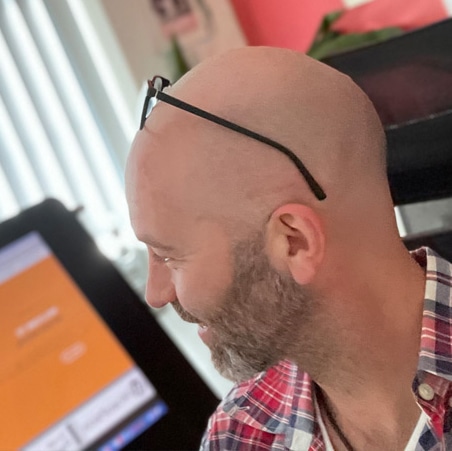
Written By Adam Rushton
Adam has made a name for himself in the illustration industry and is a passionate blogger and writer on the subject of art, illustration and graphic design.
His artwork has been featured in countless publications and used for very well-known media projects. As a professional illustrator for over 20 years, Adams media outlets, a wealth of knowledge, and experience enable him to consult and advise artists and illustrators in this country (from York and Manchester to Southampton and London) and all over the world.
